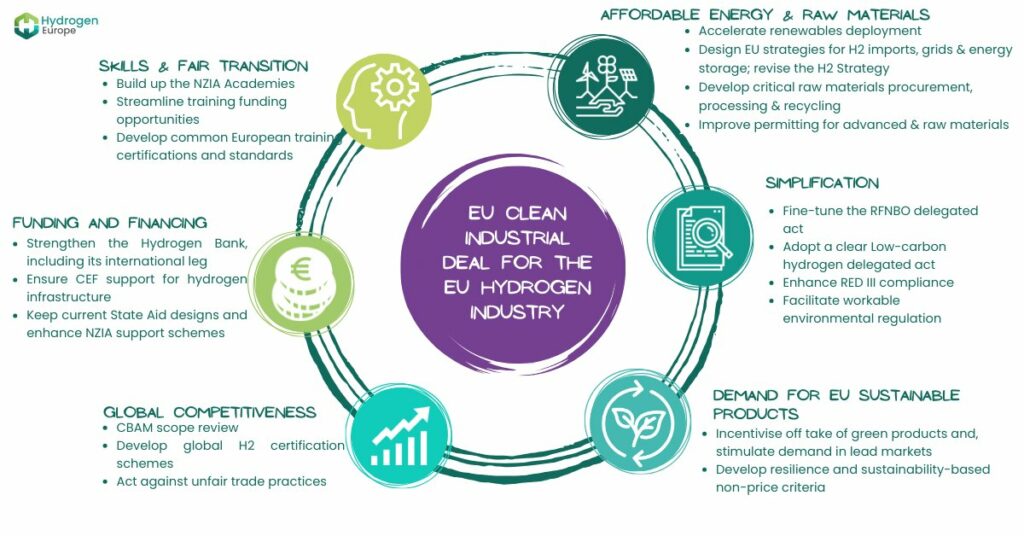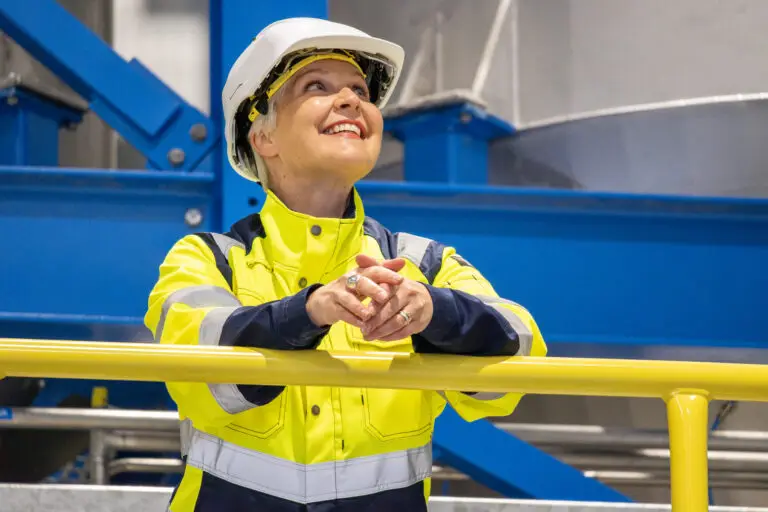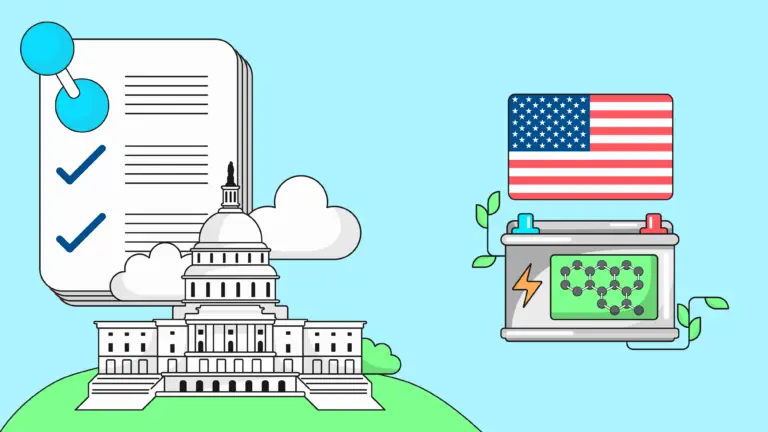This article was previously published on LinkedIn by Matti Malkamäki
A little over two years ago, in December 2022, I wrote an article on LinkedIn advocating amendments to the EU’s regulations to make them more technology-neutral and focused on the outcomes regarding carbon recovery. Now, it’s time to evaluate what has happened since then and explore the steps we can take moving forward.
At the end of 2022, the EU focused heavily on green hydrogen. There was discussion about the subsidies and grants being allocated to various projects aimed at helping the EU meet its 2030 goal of producing 10 Mt/a of new green hydrogen. The coming European Hydrogen Bank and other subsidies and programs initiated by the Commission were the tools to support this growth. In the hype, few saw that the approach was flawed despite the new approach the U.S. was launching at that time.
Development outside the European Union
Since 2022, the status quo in the hydrogen market has changed drastically. The U.S. has finalized an essential part of the IRA (“Inflation Reduction Act”), the 45V, Clean Hydrogen Production Tax Credit. The 45V utilizes a special GREET model (“Greenhouse gases, Regulated Emissions, and Energy use in Transportation”), 45VH2-GREET, to recognize different pathways for hydrogen production. To enable technological development of all sorts, the 45V also has a so-called technology-neutrality clause. This clause works over the included PER (“Provisional Emissions Rate”) – process, where petitions can be filed for a PER if the GHG emissions rate for feedstock or production technology is not included in the most recent GREET model. My colleague, Carolina Ahlstrand, just recently wrote an article on LinkedIn about 45V and the 45Q (tax credit for carbon dioxide capturing). Please see it for more details about these programs.
As a disclaimer, I need to state that after the new administration has stepped in on January 20, we need to allow some time to pass to learn more about the new directions in the U.S. Currently, the distribution of funds (grants, loans, etc.) from public sources has been paused, but the tax credits related to low-carbon hydrogen production are intact.
I have spent considerable time since 2022 with my colleagues exploring the market and advocating for the possibilities of methane-splitting technology in Canada. Like the EU, Canada has also implemented regulations and support mechanisms specifically for green and blue hydrogen. To my pleasant surprise, the Fall Financial Statement in December also included methane splitting (pyrolysis) as a newly supported technology for producing low-carbon hydrogen. While the Canadian regulation is not as technology-neutral as its counterpart in the U.S., this is a good sign for other new technologies, too.
Following Brexit, the United Kingdom has implemented various measures to enhance its business environment. Hydrogen production is no exception, with regulations surrounding the production of different types of low-carbon hydrogen being more comprehensive in the UK than in the EU. Although the UK’s hydrogen regulation is not entirely technology-neutral, it does recognize methane splitting as one of the pathways. In the UK, the carbon footprint limit is 2.4 kg CO2e/kgH2, thus being stricter than in the EU but has less driving compound than in the U.S. and Canada. The primary support mechanism in the UK is the Hydrogen Allocation Rounds (HARs). This funding initiative by the UK government is designed for hydrogen producers who meet the criteria established by the UK Low Carbon Hydrogen Standard. The aim of this funding is the operating cost gap between low-carbon hydrogen and its fossil fuel-based counterparts.
Technology neutrality in regulation is an essential part of technological development
Let’s take a moment to reflect on the mobile phones of the past. What kind of mobile phone did you have 25 years ago, during the Millennium celebrations? Remember well-known brands like Blackberry and Nokia? They were great phones at the time, but you definitely wouldn’t trade your current phone for a 25-year-old model, giving up all your apps and the web browser just to play the classic Snake game again. What do you think would have happened if the regulators of 2000 had decided to freeze the design of phones from that time? How would our phones look now? Would we still have touch screens and apps? While some aspects of development may not have been ideal, overall, most advancements have been beneficial.

The same analogy goes with hydrogen. In 25 years, we will see new technologies to produce low-carbon hydrogen from various sources. While this development might not be as fast as the one with mobile phones, we should not stop here and now. Utilizing low-carbon hydrogen is a good way to decarbonize different processes, especially within different industries. It is not a silver bullet for all our decarbonization needs, but some processes will benefit from it.
Nevertheless, blocking technology development for new ways of producing low-carbon hydrogen does not benefit anyone. It is somewhat remarkable that lobbying work and time are needed to get this message through in the EU.
The current situation in the EU
After the initially published “European Green Deal,” the new EU Commission is now releasing the “European Clean Deal.” The name indicates that the results (reducing carbon emissions) will now be more in focus than they used to be. Hydrogen Europe published the image shown below in mid-January 2025 to explain their view on what this shift of policy will mean for the hydrogen industry. The image refers to some acronyms like RFNBO (“Renewable Fuel of Non-Biological Origin”) and RED (“Renewable Energy Directive”), which are part of the very complicated EU regulation.

This article is published on LinkedIn late January 2025. We are currently awaiting the release of the LCH DA (Low-Carbon Hydrogen Delegated Act) in the EU. The draft was released for comments in September 2024, so it is reasonable to expect that the final version will be published in the near future. I sincerely hope that it will not impose more restrictions on the allowed technologies than those outlined in the draft. Still, the draft did not include any technology neutrality measures. Hydrogen Europe, in their image, suggests “fine-tuning” and “enhancing” some European directives, likely to accommodate new technologies and provide increased flexibility. It’s important to note that, unlike regulations in the U.S. and Canada, European regulations set a single target for the carbon intensity of green and blue hydrogen at 3.38 kg CO2e/kgH2. In contrast, the strictest limit in the U.S. is 0.45 kg CO2e/kgH2, while Canada has a limit of 0.75 kg CO2e/kgH2.
One interesting point worth noticing in the image above is the mention of critical materials. This is a significant and complex aspect of the hydrogen business. My colleagues will provide further details about this in their articles soon. In short, renewable energy production, including electrolyzers, requires several critical materials. Methane splitting, however, can produce critical materials such as graphite.
What’s next?
Since the article I mentioned in the introduction, the excitement around hydrogen in Europe has shifted to what some are calling a “hydrogen winter.” The availability of inexpensive financing has not been enough to overcome poor regulatory frameworks. It’s similar to building a house: if the foundation is flawed, no amount of later adjustments can fix the overall structure.
Green hydrogen, especially when produced using wind-powered electrolyzers, faces significant challenges to be considered low-carbon. When we calculate the carbon footprint, it must be ensured that:
- The electricity used is new, ensuring no double-dipping on incentives and that emissions do not increase in other parts of the grid.
- Renewable energy is produced simultaneously with hydrogen generation to ensure that the electrolyzers utilize renewable power and achieve a low carbon footprint.
- The hydrogen facility must access the renewable power generation facility to, again, ensure that the electrolyzers genuinely operate with renewable power, thereby achieving a low carbon footprint.
This principle is commonly known as the “three-pillar principle” and is essential for ensuring that green hydrogen is genuinely low carbon. As a reference, if normal power directly from the grid in Germany were used to produce hydrogen, the carbon footprint of that hydrogen would be nearly twice as high as that of the current “grey” hydrogen. Grey hydrogen is produced from fossil methane through a process called steam methane reforming, without capturing the carbon dioxide that is generated. However, the three pillar principle causes many issues – such as pricing and operational volatility – that are very difficult to manage with a single solution. Greater freedom to produce low-carbon hydrogen must be granted via technology neutrality in the regulation. This should come as no surprise, as the message aligns with the guidelines outlined for example in Draghi’s recent report to enhance Europe’s competitiveness.
Mankind must shift from fossil fuels to renewable energy sources; there is no doubt about this. This transformation will take decades, and we need to acknowledge that idealism based on dreams will only hinder this transition. Currently, we are facing challenges with hydrogen regulation and support mechanisms in Europe. It is essential to adopt a new approach that allows low-carbon hydrogen produced through various methods to facilitate and accelerate the development of different types of renewable hydrogen. The understanding and political will for this development must improve. I hope my sequel to this article in a couple of years will be more positive than this one.







